Menu

THE BLACKSMITH
SHIGEKI TANAKA
- Choosing a selection results in a full page refresh.


















Usually ready in 1 hour
| Blade Length | 210 mm |
| Total Length | 355 mm |
| Steel | VG-10 |
| Handle | Walnut |
| Ferrule | Pakka |
| Rockwell | 61-62 |
| Height Spine to heel | 50mm |
| Width at Spine | 2.3 mm |
| Weight | 167 grams |
Shigeki Tanaka started his blacksmith journey when he apprenticed in the Takefu knife village near Echizen city for three years. A region renowned for it's cutlery making and forging techniques he learned the intricacies of hand forging blades used for food production there. He later moved back to Miki City to continue his work at his Family's shop where they primarily made sickles and other agricultural tools. Now the shop focuses on Kitchen knives and has gained a reputation worldwide for producing some of the best knives available.
The Gyuto is an essential for any professional and is the Japanese equivalent to a standard western style Chef's Knife. It is the most versatile knife available and can complete just about any task you toss it's way. Adept and slicing, chopping, mincing and can even be used quite effectively to break down larger fish. A great option for the home cook who feels comfortable using something of this length.
Follow these care recommendations for your Japanese knives to protect the edge and keep them sharp as long as possible:
All products are shipped within 24 hours. We offer same day shipping for products ordered by 12pm. Please allow 4-7 business days for your shipment to arrive with standard shipping. Expedited shipping options are also available at checkout.
We offer free shipping on orders within Canada over $150 CAD and free shipping on orders to the US over $200 USD.
Curbside pick-up is available at both our Hamilton and Etobicoke locations.
To make sure our customers are always satisfied, we offer full refunds on products for 14 days after receiving them. See our full return policy for details.
More questions? Check out our shipping policy, our return policy, or reach out to us directly.
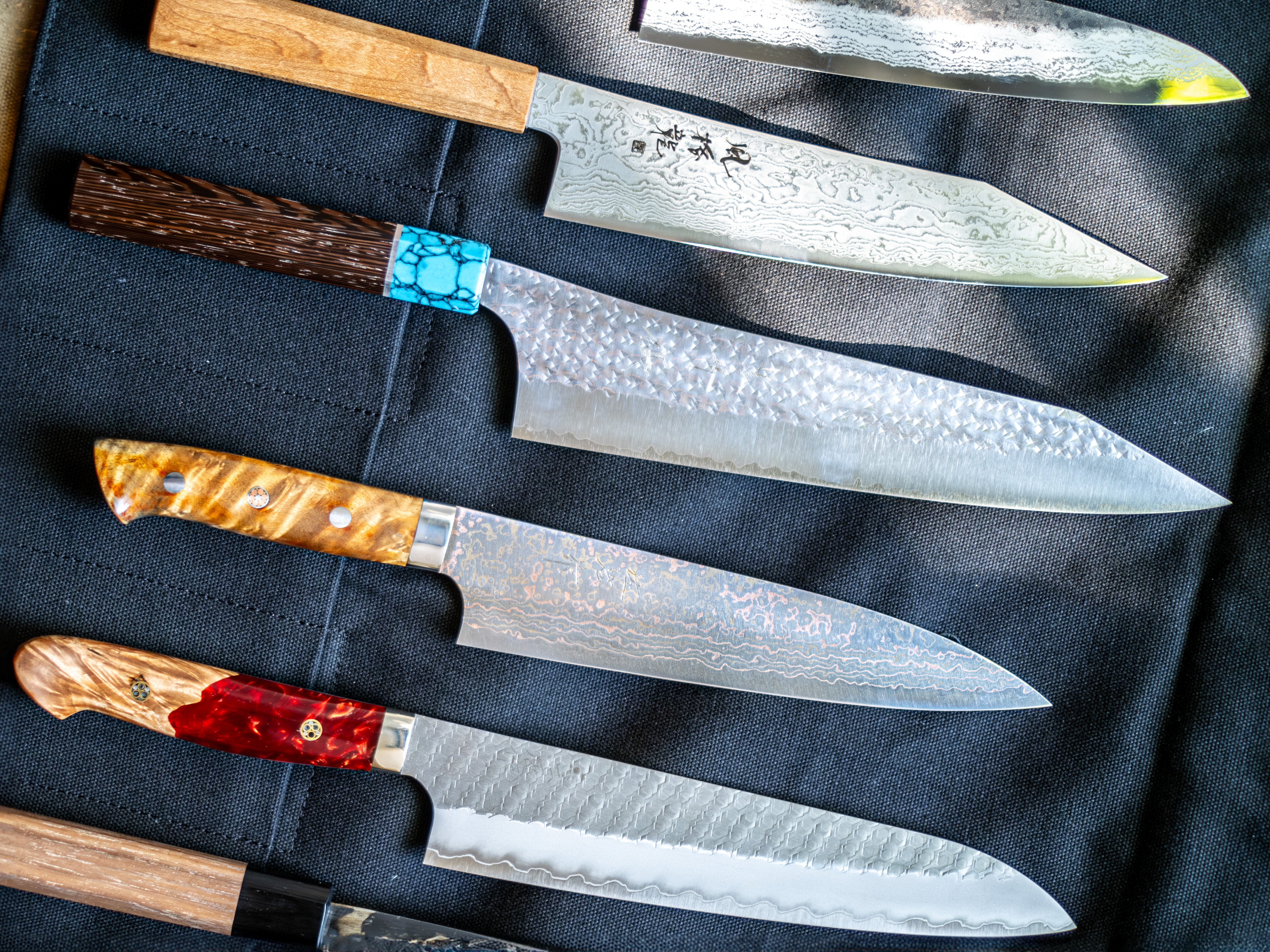
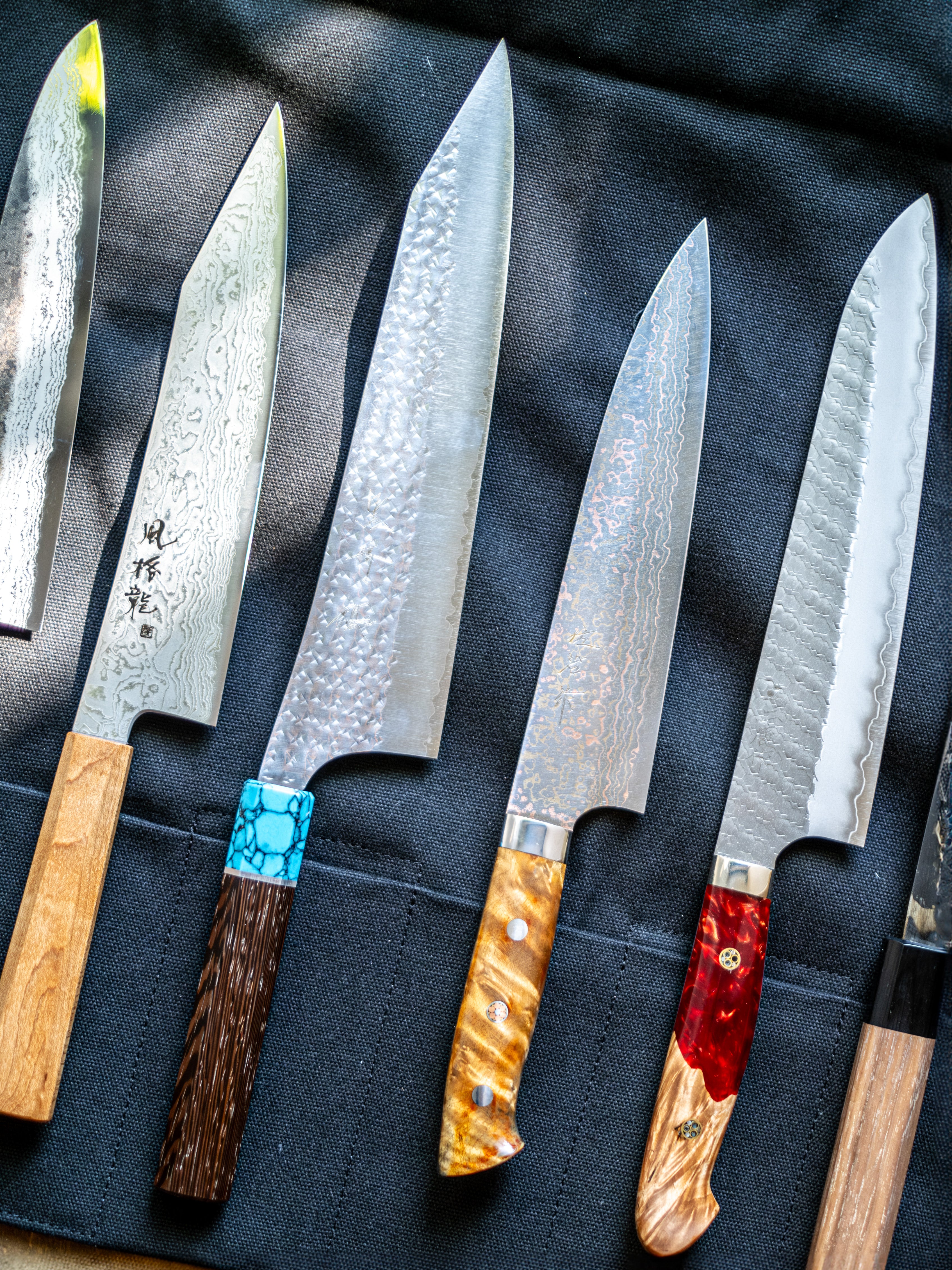
The Gyuto is the Japanese equivalent to the western style chef’s knife and is without question the most versatile knife shape. It ranges in size from 180 mm (7 inches) to 240 mm (10 inches), making it longer than the Santoku and Bunka. This length makes it adept at handling almost any task you'll come across in the kitchen, from mincing small ingredients to chopping through larger fruits and vegetables. The longer the knife, the more time it will take to grow accustomed to its length, but the more versatile it will be.
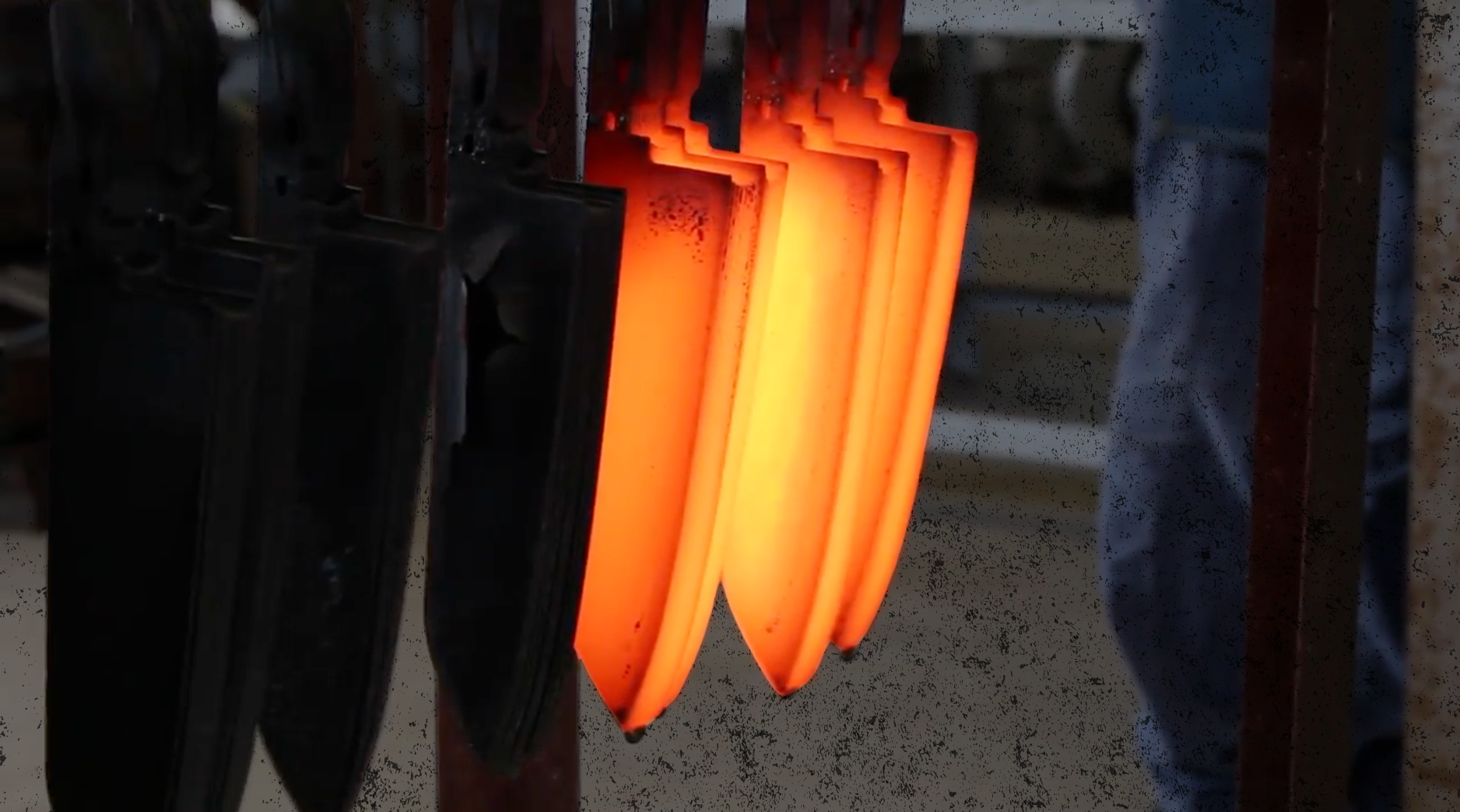
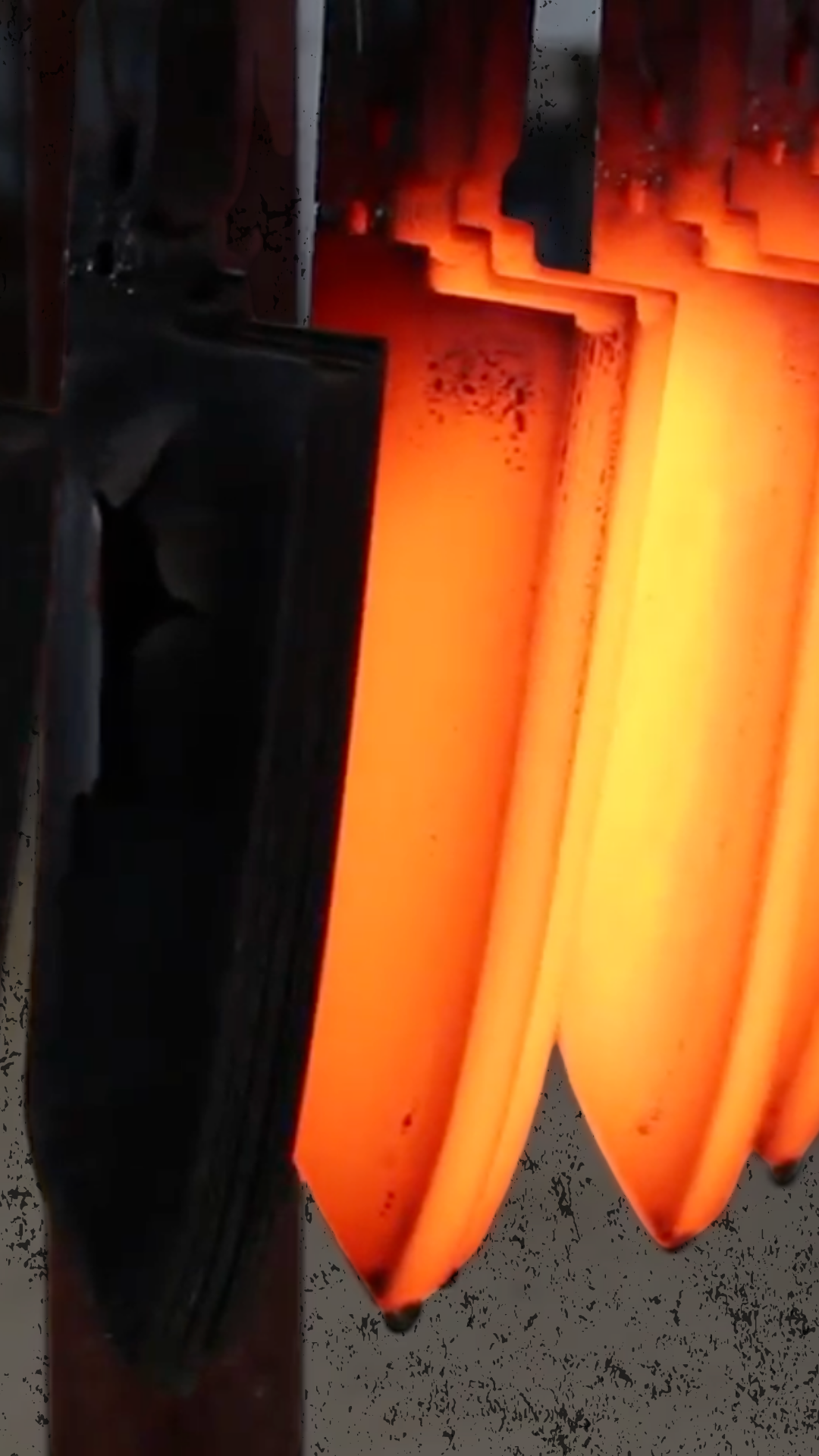
Likely the most widely used Japanese stainless steel, it provides great rust resistance, very good edge retention, and is relatively easy to sharpen. Because of how many companies use this steel to produce their knives, it can sometimes get a bad rep, but we have had nothing but positive experiences using and sharpening it. Knives made from this steel are generally a bit more affordable compared to those made from steels like R2 and ZDP189 while still offering fantastic performance and easy maintenance.
Chemical Composition:
C 0.95-1.05% | Cr 14.5-15.5% | Mo 0.9-1.2% | V 0.1-0.3% | Co 1.3-1.5%
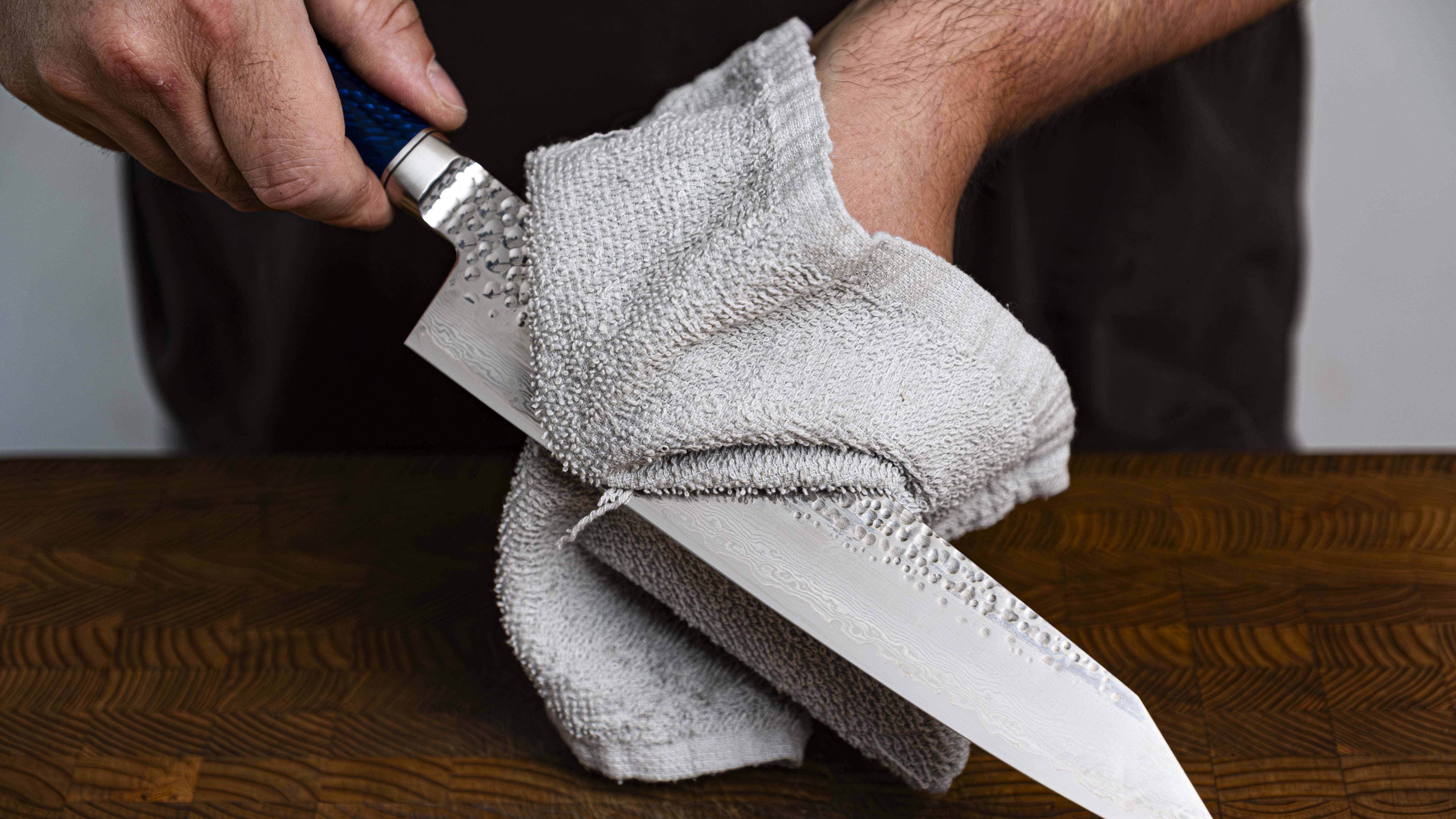
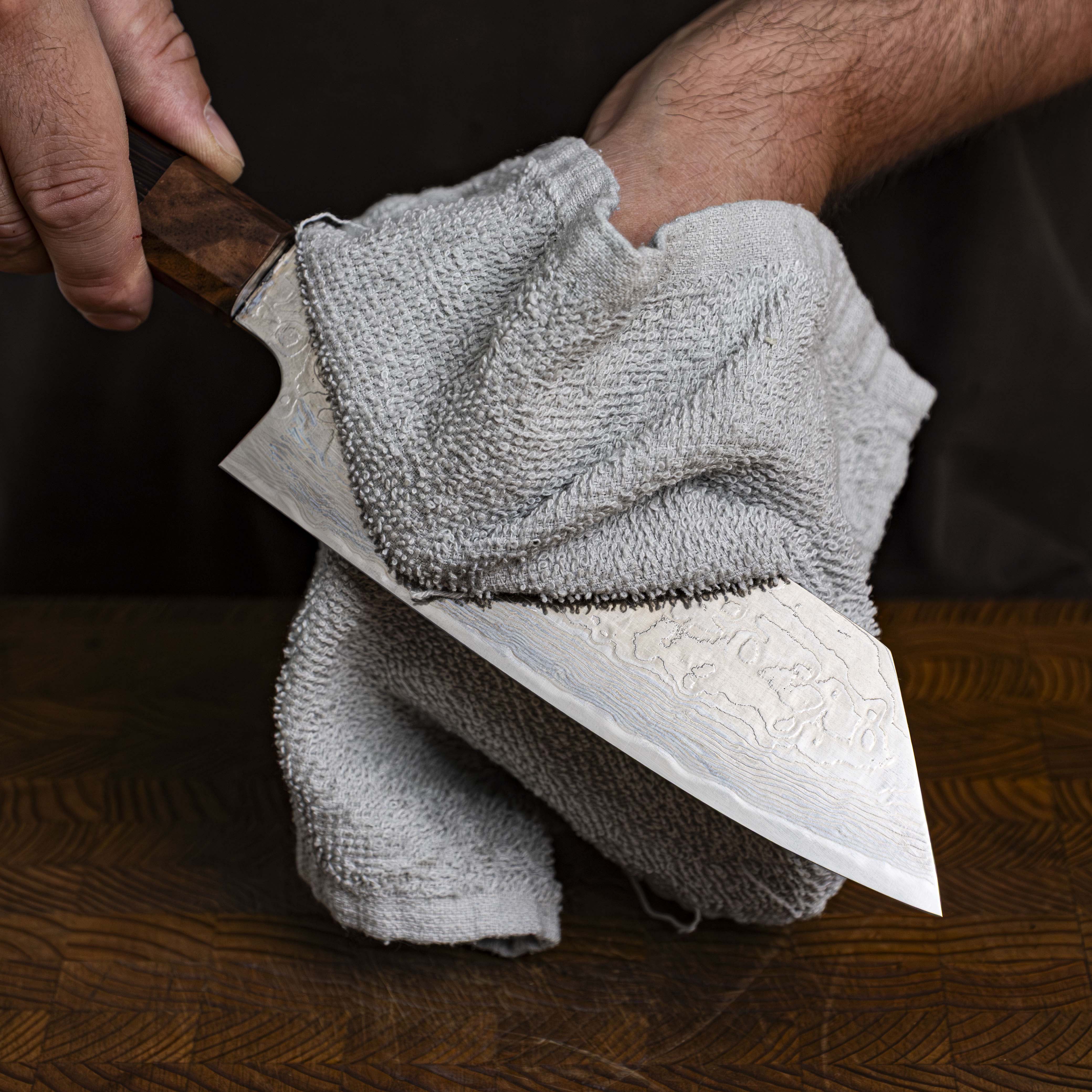
LOW MAINTENANCE
Stainless steel Japanese knives are made in a process called “Sanmai” or “Forge welding” where two softer layers of stainless steel are laminated around a harder core layer of stainless steel. All three of these layers are rust resistant and therefore are not susceptible to rust or discoloration. The softer outer layers of steel are used to make the knife more durable and flexible while the harder core layer is used to provide better edge retention to the blade.

Shigeki Tanaka started his blacksmith journey when he apprenticed for three years in the Takefu Knife Village in Echizen City, Fukui Prefecture, Japan, a region renowned for its cutlery making and forging techniques. He learned the intricacies of hand forging blades for food preparation there before moving back to Miki City, Hyogo Prefecture to continue his work at his family's shop where they primarily made sickles and other agricultural tools. Now, the hamono focuses on kitchen knives and has gained a reputation worldwide for producing some of the best knives available at a great price point.
